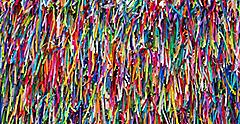I've only been a few places as delicious as the Argentina wine country — and I'm not just referring to the deep fruitiness of the rich Malbec produced there. The exhilarating bike rides on the dirt roads between wineries and farm-to-table restaurants, the panoramic views of the snow-capped Andean peaks, and the delectable pairings of wine and Argentinian beef make a wine trip through Argentina a feast for all the senses.
Whether you're already booked to visit Argentina in the near future or are still dreaming up your visit, let this guide inspire your future travels and leave you craving a glass of wine.
Discover The Truth About Malbec
Although several different varietals of wine grow in Argentina vineyards, the most common is Malbec. Although it's now beloved around the world and synonymous with Argentina, Malbec's history is a surprisingly sad one, starting with its name. "Mal bec" is French for "bad beak" or "bad nose," referring to the perception of wine growers in France — where the grape originated — that Malbec smelled and tasted bad.
However, as a man named Professor Pouet found when he brought Malbec with him on an expedition to South America in the mid-19th century, there was not an intrinsic problem with the grapes. Rather, they were incompatible with the French soil and climate. As it turned out, the eastern foothills of the Andes Mountains were significantly better suited to Malbec — the grape had simply been misunderstood.
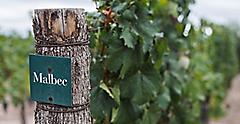
The key reason Malbec worked out better in Argentina than France was irrigation. While much of France's wine country is relatively arid and often cloudy, Argentina's Uco Valley is sunny most of the year, and its proximity to the mountains' melting snowcaps means it's also simultaneously blessed with a natural and free source of water. As it turns out, these two factors were the perfect key to unlock Malbec's long-hidden flavor profile.
As you'll discover during your time traveling in the Argentina wine country on vacation, the Malbec flavor profile is as rich as the local culture and as intense as the beauty of the landscape, with dominating sour notes like blackberries and plum. Often described as "meaty," it also happens to pair perfectly with the Argentinian beef raised nearby.
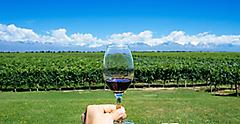
Why Mendoza Leads The Wine World

The Mendoza wine region isn't the only place in Argentina with Malbec vineyards, but it is the best known and easiest to explore. Mendoza's relatively large size (around 1.2 million people) and the plentiful buses and flights that connect it to other cities in Argentina and South America are part of what has led to the development of tourist infrastructure, namely the fine hotels in its city center. In earlier decades, Mendoza's road and train connectivity led winemakers to choose it over other cities and towns.
In terms of the art of winemaking itself, the Argentina vineyards in Maipú (the high plateau near Mendoza where most wine is grown) are at the "Goldilocks" altitude to produce the perfect Malbec flavor. Specifically, the area sits at about 750 meters or 2,460 feet above sea level. This ensures the plentiful sunshine and constant warmth necessary for Argentina's famous Malbec magic — perhaps better than any of the other famous wine regions in the country's Andean area.
There's also the fact that the area known as "Mendoza" is actually three distinct wine growing areas. The aforementioned Maipú is the most prolific and most visited. Then there's Luján de Cuyo, which is a similar distance from Mendoza, sitting a bit to its southwest. The third of the Argentina wine regions is Uco Valley, which is more than an hour to the south of both, but it makes up for its relative inconvenience with more plentiful growing area.

Exploring The Best Wine Region In Argentina
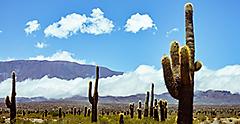
Although most wine tourists in Argentina simply visit Mendoza because of its convenience and variety of experiences, it's not the only game in town. Another great place for wine lovers to visit in Argentina is Salta. While Salta is also famous for Malbec, you can drink other wines there, too, such as Cabernet Sauvignon and Merlot. As Argentina's farthest north wine region, Salta's cityscape is more Spanish colonial than Mendoza's European-inflected one, and its surrounding landscape is more arid and cactus-filled.
Another spot to visit while on vacation in the Argentina wine country is Rio Negro. Located in northern Patagonia not far from the ski paradise of Bariloche, this province is both cooler and more mountainous than Mendoza or Salta, and it boasts more dramatic scenery on the whole. Many wineries there are located on terraced hilltops or alongside rivers, such as the River Carmen. If you've ever been to Portugal's Douro Valley, some of the scenery in Rio Negro (at least the wine-producing parts of it) is not entirely dissimilar.
Bariloche, this province is both cooler and more mountainous than Mendoza or Salta, and it boasts more dramatic scenery on the whole. Many wineries there are located on terraced hilltops or alongside rivers, such as the River Carmen. If you've ever been to Portugal's Douro Valley, some of the scenery in Rio Negro (at least the wine-producing parts of it) is not entirely dissimilar.
Beyond these, Argentina has four other denominated wine regions: Neuquén, Catamarca, La Rioja and San Juan. Like Mendoza and Salta, Neuquén — which is located just north of Rio Negro, amid slightly more arid scenery — focuses on red wines. Meanwhile, Catamarca sits about as close to the Andes as Mendoza but is farther north, where a combination of warmer weather and drier air leads to juicier grapes that are more productive and, therefore, more profitable.
San Juan and La Rioja sit between Mendoza and Catamarca and make great stops if you're planning to take a longer road trip through the Argentina vineyards — or even beyond it, all the way up to Salta. Spending even a single day in any one of Argentina's seven wine regions gives you a wonderful peek into what makes this corner of the world so special.

Planning A Day Trip In Argentina's Wine Country
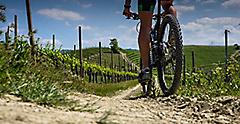
Regardless of which Argentina vineyards you visit, allow me to take you through what I consider to be the perfect vineyard day trip. It starts early, ideally waking up on an estancia (or ranch) right in the middle of the wines, or in the city of Mendoza with a bus ride out to the wine country. Once you can see the plump, juicy grapes on the vine — and the snow on top of the Andes shining above and beyond them — rent a bike for the full rustic experience.
I usually like to have at least one or two particular spots in mind. In Maipú near Mendoza, for example, I like to contrast a more commercial producer like Trapiche with Zuccardi, which is a smaller, family-owned brand. However, I make sure not to pack my schedule too full so that I stay open to those spontaneous moments, like passing a vineyard not listed online and deciding to pull over. Likewise, while I'm at a particular winery, I pace myself. The best way to avoid getting burnt out is to take small sips spread out throughout the day.
Within each winery, a variety of experiences are possible. Larger Argentina wineries are more likely to offer totally free tastings, although these also tend to be wine-only (no meat or cheese plates, unless purchased à la carte) and relatively small pours. On the other hand, family wineries may charge a fee for tasting, but they also tend to be much more generous in portion. Many more local places also have full farm-to-table restaurants on site. Even the world's best charcuterie board is no match for the culinary synergy your mouth experiences as you tear into a rare asado steak and wash it down with a mouthful of fruity Malbec.
The experience at larger or smaller wine producers differs, but each offers something special. Larger wine producers tend to have professional sommeliers on staff who have dedicated their careers to this, while the expertise offered by the guides at more home-grown wineries — like the San Juan winery I spent a day visiting — may be based more on passion and experience. Don't be afraid to chat up the sommelier and ask all the questions you have. Before long, you'll be a pro at identifying a quality wine.
Another thing to consider on your tour of the Argentina wine country is how many bottles (or cases!) you plan to take home. Think ahead of time about how you'll transport your precious cargo.
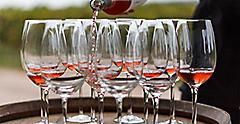
Prepare Your Argentina Wine Country Vacation
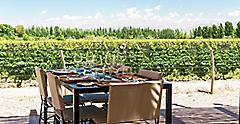
If you want to plan your own wine trip to Argentina, the first step is to decide how it fits into the rest of your travel. Maybe you'll want to fly to Mendoza for the week before a long weekend in Buenos Aires, or maybe as a chaser to an expedition through Patagonia or even to Antarctica. Or, perhaps you'd like to include it as one of many stops on a more epic journey of South America. For instance, some longer-term travelers visit Mendoza or Salta while moving between Buenos Aires and Santiago, Chile, either before or after crossing the Andes (depending on the direction of travel).
The second question is where you'll stay. While some travelers prefer to stay at an inn on-site at the winery, others prefer a city hotel in Mendoza with a day trip to the vineyards. To do this, catch one of the frequent buses from Mendoza's city center to Maipú, the largest and most convenient town in the wine country. The journey takes just 42 minutes and drops you off in walking or biking distance to several wineries.
You'll also need to decide how extensively you want to explore the wine country. Will you primarily dine and drink at the vineyard where you're staying, or will you rent bikes and ride between several of them? Do you have particular vintners in mind, or will you simply see where the (dirt) road takes you? Whatever you choose, the Malbec produced near Mendoza is delicious and unique, so there's no such thing as a bad glass.
Having these broader strokes in place will allow you to craft tangible plans and make your trip a reality. That said, I don't necessarily recommend planning out an itinerary in excruciating detail. You'll want to leave room for magic — and time to sleep late, in case you have a few too many glasses of Malbec and wake up not feeling your best. Simply book your way to and from Mendoza, work out where you're staying, and set the intention to wine, dine and enjoy yourself.
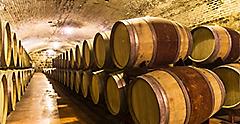
Get Royal Deals, Sign Up Today

Getting There
Explore Our Most Affordable Itineraries
Taste the spirit of Argentina on a South America cruise.




